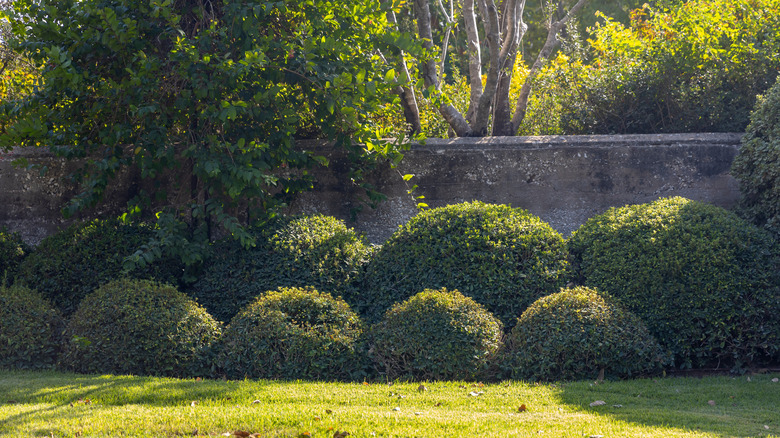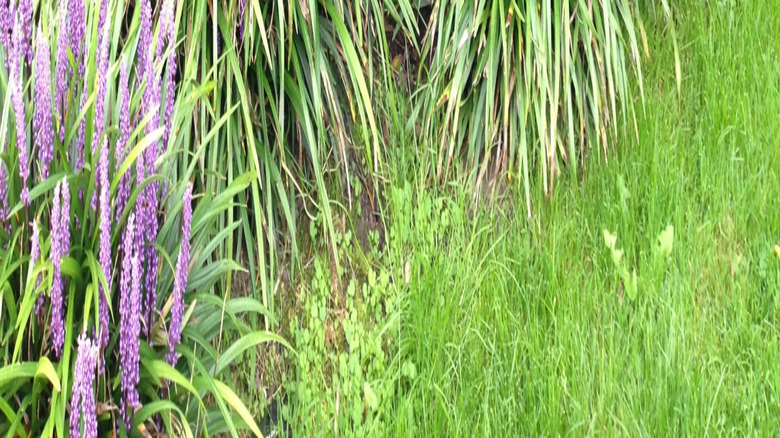The Perfect Companion Plant For Pittosporum You Might Be Overlooking
Whether you have a single specimen pittosporum shrub in your garden, or you have a nice screening hedge with multiple plants, there's a companion plant you might be overlooking, which will grow quite happily in the less-than-perfect conditions present under or around the edge of your pittosporums. As pittosporums are quite tall-growing evergreen shrubs, they shade the ground below, not only from the sun but also the rain. This means that you'll be looking for a companion plant that can thrive in dry shade, and monkey grass (Liriope muscari), can do just that. It's one of several ground cover plants that love shade, and can even be planted under trees.
Thanks to their dense foliage, pittosporums make excellent screening plants, which is why underplanting them can often be a challenge. The soil under the tall shrubs tends to be quite dry and receives minimal sunlight. That's why monkey grass makes such a good companion, as it will grow happily in deep shade as well as full sun. This perennial, with its strappy green leaves and delightfully showy purple flowers, is also drought-tolerant, since it has fleshy, tuberous roots. Just keep in mind that monkey grass is considered invasive in certain states, such as Georgia, Virginia, and South Carolina, so if you live in these areas, check with your municipality for alternatives that like the same conditions.
How to help monkey grass thrive alongside your pittosporum
Monkey grass grows well in USDA hardiness zones 5 through 10. Once established, it's even deer and rabbit resistant. To help your plants get comfortable in their new home, you want to provide regular water during their first year, but after that, they should survive on natural soil moisture without supplementary irrigation. Adding a thin layer of mulch to slow down evaporation will also help. As a bonus, monkey grass will actually appreciate the protection it gets from pittosporum, as it doesn't like being exposed to frost or cold winds.
Although monkey grass is not a heavy feeder, applying some slow-release fertilizer in early spring will help the plants to remain lush and healthy. To freshen up your plants, you should cut them back at the end of winter by just trimming the top growth down to a height of around 2 to 3 inches, without damaging the crown. You can even use a mower, but make sure you set the blades to the highest possible mowing height. As this is a clumping plant, there are downsides to monkey grass you shouldn't overlook. However, you can control the spread of the clumps by dividing your plants every three or four years if you wish; although this is not essential to keep them healthy. Finally, monkey grass is also an ideal plant for your sloped ground because its clumping root system will help to keep the soil in place.

